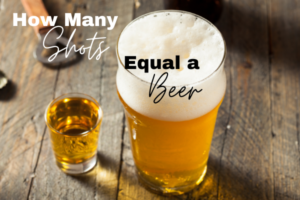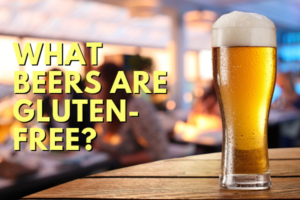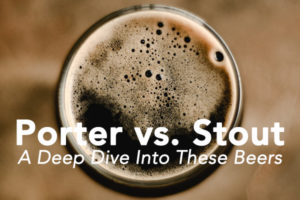Lager? Pale lager? Or Pilsner?
Some people just drink the beer and forget their woes.
But if you’re a beer nerd, you may find yourself wondering every time you take a sip of the crisp golden liquid.
So what’s the difference between a lager and a pilsner?
This might come as a surprise…
But the truth is, Pilsner is only just a type of lager.
The two seem like a polar opposite of each other, from their respective light and dark colors to the contrasting tastes… so how is that even possible?
Well, I suggest you grab a good can of beer from the fridge (or brew your own with an all-in-one brewing system) and let me walk you through it.
How Is Beer Made?
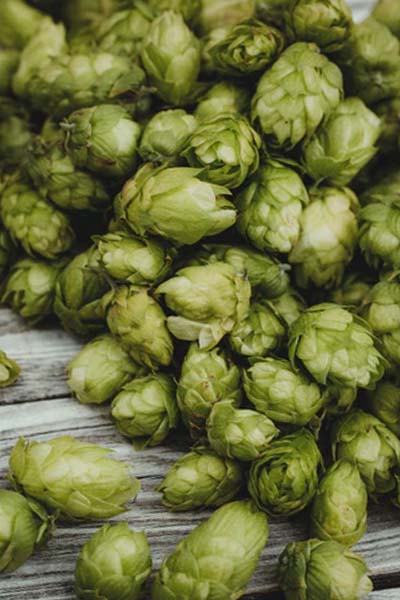
A basic beer is made up of only four ingredients- grains, water, hops, and yeast.
The first step in homebrewing beer is the malting process. This process consists of harvesting and processing the grains through heating and drying to get them ready for homebrewing.
But don’t worry!
This step is usually done by homebrew suppliers and all you have to do is buy your own barley (or whatever grain you prefer.)
Now, this one is usually the first step of beer-making and it’s the mashing process.
Contrary to its name, you don’t really mash anything in here. The idea is to steep your grains in hot water, much like how you make tea, so that the enzymes in the grains would break down and release its precious sugars.
The grain’s sugars are what your yeast will need to be able to create alcohol for your beer.
For this step, you can either use malt extract or pure grains. If you’re still a beginner, extract will be much easier for you.
After mashing is the boiling process.
After all the sugars are released from your grains, you now have your wort. A wort is what an unfermented beer is called.
Your wort is boiled for around an hour during which your hops are added in different intervals.
Hops are fruits that look like green cones and they’re added to your wort to counter-balance all the sweetness and also act as a preservative to your beer.
After boiling…
…your wort is now ready for the fermentation stage.
But before that, the liquid will first have to be strained and cooled to the perfect yeast-pitching temperature.
Once that’s achieved, you can finally transfer the wort to a vessel and pitch the yeast in.
And just let the fermentation magic begin.
Basically, the yeast eats up all the sugars, converting them to alcohol. CO2 will then be released.
The beer is stored for about two weeks in the required temperature (room temperature for ales and cool temperature for lagers) after which they’ll be ready for bottling!
Now the choice is yours whether you prefer a flat beer or a carbonated one.
To do this, you can either artificially carbonate your beer just like soda by putting 30-40 PSI of CO2 into your beer keg, or you can do it organically by letting it age for a few weeks to months more through the CO2 being produced by the yeasts.
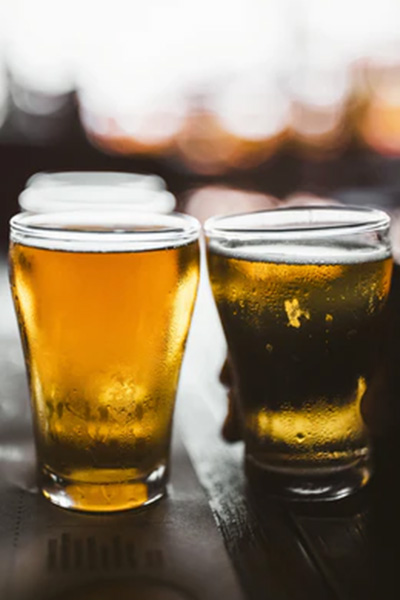
Different Beer Types
There are over 75 types of beer today that it’s so easy to mistake one for another just like with the lager and pilsner affair. So here are some of the most popular beer types and the qualities that make them different from the rest.
Lager
What distinguishes the lager from other beer types is its strain of yeast. Lagers are called bottom-fermented beer because the strain of yeast it uses sits and ferments at the bottom of the vessel and at a cooler temperature. This gives this type of beer a unique flavor. Lagers can be light, dark, or amber in color.
Ale
The Ale is the most common type of beer and has many varieties itself. Generally, ales are called top-fermented beer because in contrast to lagers, ale uses a strain of yeast that ferments on the top of the beer in a warmer temperature close to room temperature.
Ale has so many different varieties that it’s hard to say what its flavor exactly is.
The English pale ale has more of an earthy and bitter flavor whereas most American pale ale has fruity notes in it. There’s also the Belgian pale ale that’s much sweeter and less hoppy.
Wheat
Wheat beer has a foamy head with a much gentler and sweeter taste with a silky texture. Some wheat beers may taste and smell like banana and bread and some even have a more playful aroma to them, like a bubblegum one.
Pilsner
A pilsner is a type of lager in a way that they’re produced in the same manner- through bottom fermentation and at a cooler temperature. But compared to the lager, the pilsner has more of a crispier and even spicier taste, thanks to the Saaz hops.
Stout
This type of ale is a winter favorite, with its roasted and even chocolaty flavor, the Stout is much darker and heavier both in looks and flavor compared to other types of beers. They’re not always sweet but Stouts can be strong and bitter in some cases.
Sour Ale
True to its name, the sour ale or sour beer has an intentionally acidic or tarty taste. It’s caused by the bacteria and yeast (usually wild yeast) used for the beer. The bacteria can be lactobacillus or pediococcus and they turn the sugars into lactic acid which results in the sour ale’s distinctively funky flavor.
Pale Ale
Pale ale is made with pale malt and ale yeast which give it its pale golden color. Pale ales vary from country to country. It can be fruity (Belgian), bitter and earthy (English), or hoppy and citricy (American).
India Pale Ale (IPA)
A perfect pair for fatty and rich foods, the IPA is distinguished by its bitter and hoppy flavor. Although it’s called India Pale Ale, the IPA actually originated in England and was made to be extra strong so it can survive the long journey to India.
Blonde Ale
Simple and crisp, blonde ale is that one easygoing friend that’s up for anything and has no issues or dramas. It’s also sometimes called Golden Ale and is characterized by its pale color and clean flavor. Some blonde ales have fruity or spicy flavors added but it remains one of the most approachable beers ever.
Brown Ales
This is another English-style ale that’s characterized by its sweet, nutty, or even chocolaty flavor with low to medium hop addition and aroma.
Pilsner Vs. Lager – History And Origins
Larger has been around for literally thousands of years while the pilsner is a relatively new beer type, emerging only in the 19th century.
Until the 19th century, the popular lager was called lagerbier, referring to the beer that’s brewed with bottom feeding strain of yeasts and in a cool temperature.
“Lagering” or cold storage of beer was already a popular practice back in the medieval times, especially in northern Europe- mainly Germany and Austria.
While people only used one type of yeast in the olden times, and that is the Saccharomyces Cerevisiae, people in Germany begged to differ.
The yeast strain Saccharomyces Pastorianus was used in their lagers and in contrast with the Cervisiae, this type of yeast feeds at the bottom of the vessel and thrives in a cooler environment.
In the 19th century, lager brewing became the main form of brewing in the Kingdom of Bohemia.
But then everything changed.
Well, not really changed but as time passed, the people-especially in the Bohemian cities, became increasingly dissatisfied. The government became particularly concerned when the citizens ditched their Bohemian beers altogether.
So enters the Bavarian Josef Groll.
The Bohemian city of Pilsen founded a city brewery- now called Pilsner Urquell- and employed Groll who introduced a new style of brewing using his Bavarian ways.
He went on to use soft water instead of the usual hard water and added the noble hop Saaz hops, British malts, and the Bavarian style of lagering, that’s now the famous bottom fermentation process.
The beer produced was a clearer golden liquid with crisp and spicy notes in it. People loved the look and the taste.
It didn’t hurt that it’s also the time when glasswares became much cheaper so people were able to exhibit the nice pale golden color of their pilsners.
Pilsner Vs. Lager – How Is The Beer Made?
Despite the seemingly great difference with their colors and tastes, the lager and pilsner are bound by the fermentation process with which they’re created.
Pilsner
| Process | Description |
|---|---|
| Mashing | Don’t boil your mash. Instead, hold it in 68 °C while infusing it with near boiling water while stirring (or using a recirculating mash system if you must). |
| Sparging | After mashing, it’s time to sparge it gradually with 77 °C water. Then boil for the next 90 minutes. |
| Hops time | 30 minutes into the boil, add a part of your hops. The remaining hops should be added at timestamps of 30/10/0 minutes left in your boil. |
| Pitch your yeast | Chill your wort to the perfect yeast-pitching temperature (about 10 °C) and put in your lager yeast. The most commonly used is a 20g rehydrated dry yeast. |
| Wait for it | And now you wait. Like lager, pilsner is also stored in a cool place so don’t freak out if the fermentation is much slower compared to beers fermented in warmer conditions. |
| Carbonation and racking | You can rack your beer to a keg and do a force carbonation using a priming sugar or you can also let it age for a few more months for organic carbonation. |
Lager
Making a lager is pretty much like making your basic beer. The difference lies in the fermentation and lagering processes.
| Process | Description |
|---|---|
| Primary fermentation | You can choose to either ferment it in high and then low temperature afterwards or cool it off before pitching in the yeast. If you prefer to do the latter, fermentation will be much slower but then you won’t need to mature it for longer. |
| Maturation | This stage is also called the diacetyl rest. The beer is then raised from fermenting temperature to a higher temperature (around 3-4 degrees Fahrenheit above the original fermentation temperature) and will then rest for the next two to four days. This process lets the yeast clean up after itself while releasing some of the most unique lager flavors such as the butterscotch and caramel-like diacetyl as well as the green apple flavor of acetaldehyde. |
| Lagering | And this is the stage that sets the lager apart from other beer types and where this beer got its name. The lagering stage is also called “cold stabilization” because it’s where proteins and polyphenols fall to the bottom of your fermenter to mellow out the flavor of the beer. You can either maintain a constant cold temperature throughout the process or opt to perform a diacetyl rest. Lagering takes about 6 to 12 weeks depending on the type of beer you’re aiming for. |
What Makes Them Taste So Good?
Lagers are mostly characterized by their light and crispy flavors which makes for a great thirst-quencher. This type of lager includes the crowd’s favorite pilsner.
But that’s just the basic lager. You can also have the darker types that are made from roasted malted barley which gives this type of lager more of a caramel-y flavor.
The lighter kind of lager- including the pilsner- is best paired with rich and fatty snacks such as pizza and burgers as it balances out the richness with its light flavor.
If you prefer your lager quite stronger, then pilsner will be your best bet with its slightly spicy and hoppy flavor.
Characteristics
Lager is distinguished by its crisp and light taste, which beer beginners mostly love. It’s mellow with a smooth mouthfeel despite the carbonation that’s comparatively greater than other types of beers such as ale.
On the other hand…
The use of soft water in pilsner gives it a more unique flavor compared to the lager. It’s much silkier with more aromatic flavors thanks to the Saaz hops it uses. The taste can range from light to spicy and hoppy. Although more flavorful, pilsner has more of a lighter color whereas lagers can be dark depending on the malted barley.
How To Serve These Beers?
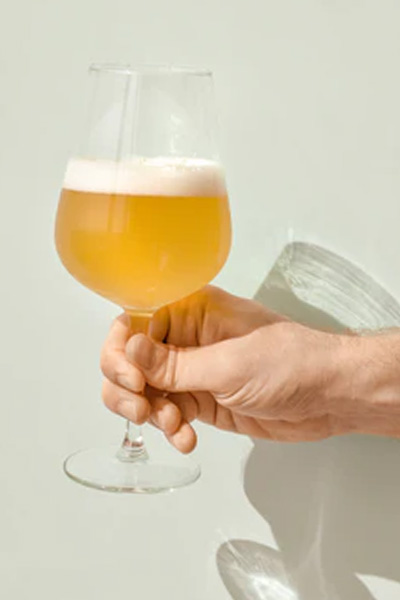
Both lagers and pilsners are usually served in tall and narrow Pilsner glasses and in smaller amounts to preserve its carbonation.
You can also serve your pilsner in a tulip glass or a wine glass but remember to resist the urge to swirl it around the glass like a wine as doing so would diffuse the carbonation and make it rather flat.
Pilsner
- Pilsner Urquell: Urquell means “originally well” and rightfully so. Pilsner Urquell is the world’s first ever pilsner, originating from the Bohemian city of Pilsen.
- Summerfest: It’s an extra smooth pilsner that’s a result of an extra-long lagering process.
- Seedstock Czech Pilsner: A craft pilsner by a brewery in Denver that focuses on using the old-world family recipes from none other than Czech Republic.
- Heineken: A popular pilsner beer with a more bitter and stronger taste than its contemporaries. It’s produced by the dutch brewing company Heineken N.V.
- Carlsberg Pilsner: It’s a Danish-made pilsner with a 3.8% ABV and a light flavor. It’s also known for its smooth and full mouthfeel and texture.
- Samuel Adams Pilsner: This pilsner is famous for its strong, spicy and citrusy flavor.
Lager
- Amstel: It’s a lager made in the Netherlands that’s characterized by its mildly bitter aftertaste. It’s available in most countries including the USA.
- Heineken Premium: A fairly refreshing lager with light and fruity notes in it. It’s also known for it’s clear color with 5% ABV.
- Corona: Produced by a Mexican company, the Corona lager has a straw color and with a clear to medium white head. It’s flavor is a little hoppy with a subtle touch of sweetness.
- Budweiser: This can refer to either the American-made pale lager or the unrelated Czech pale lager that originated in České Budějovice.
- Carlsberg Lager: Again, from the Danish beer maker, the Carlsberg lager has 5% ABV (3.8% in the UK) and is known for its strong flavor and mouthfeel.
- Stella Artois: A lager famous for its floral, hoppy, and sweet taste of aroma, the Stella Artois originated in Belgium.
Common Misconceptions About Pale Lager
Beginners in the craft of beer making and drinking always see lager as the more subdued and less flavorful cousin of ale.
While ales may boast of its fruity esters and spicy phenols, lagers can have flavors too. Lager uses the same malts and hops as other beer types and can also be manipulated to create a strong and unique flavor, such as the nutty and chocolaty flavor of the much darker lagers.
Another common lager misconception is regarding its alcohol content. Legend has it that pale lagers have less alcohol content that most beers.
I’d say this might just be a result of the bunch of pale lager advertisers that promote their products in sports events. But the truth is, lager can be either mild or strong, depending on its ingredient and make.
Conclusion
Simply put, a pilsner is a lager but with relatively new additions and style.
Although it’s very easy to think that the two beer types are totally unrelated to one another – thanks to their contrasting colors and tastes – they are, after all, cousins with the same cold fermentation and storage style.
A regular beer drinker would just gulp it all down with not much thought about the beverages’ origins.
But we aren’t beer geeks for no reason and it’s always nice to know where your favorite lager came from and what makes it so badass, right?
So what’s your favorite, the lager or the pilsner?
What’s your favorite brand?
Let me know over our social media so we can discuss!

